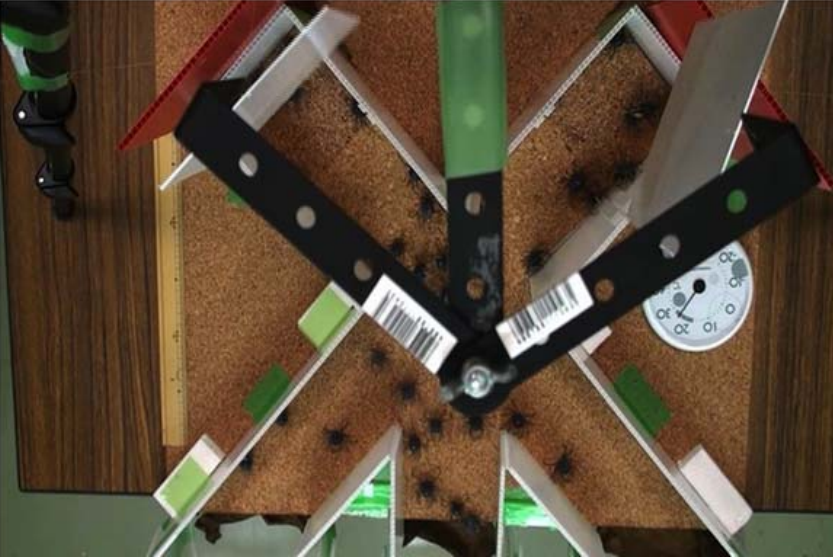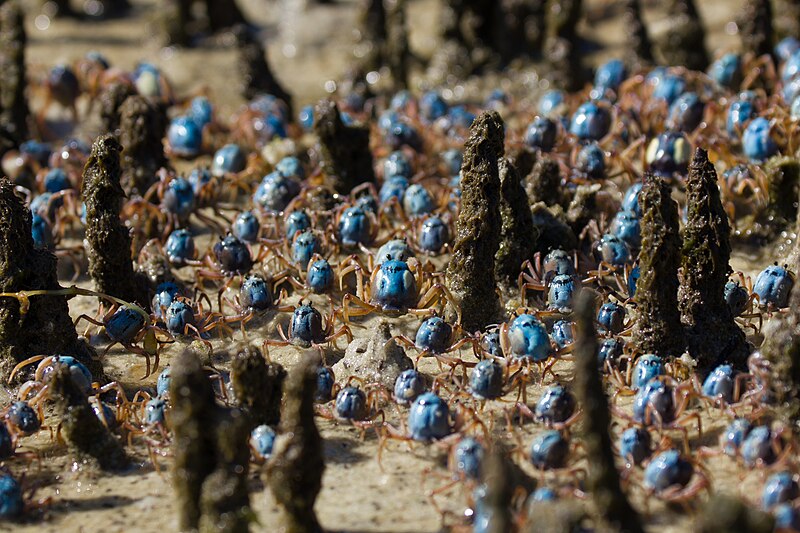In 2011, researchers from Japan and the Center for Unconventional Computing in the UK asked one of the most important questions ever asked. How many crabs do you need to build a computer?
And then, they answered it.
- Nishiyama Y, Gunji Y-P, & Adamatzky A (2012) Robust Soldier Crab Ball Gate. https://doi.org/10.48550/arXiv.1204.1749
If you want to build a computer from scratch, you must first invent a logic gate. Using soldier crabs, which have fairly predictable behavior, they were able to model a very reliable OR gate and a reasonably unreliable AND gate. It took 80 crabs to make one logic gate work. A working logic gate gets you a bit. 8 bits gets you a byte.
A carcinized computer runs on 640 crabs per byte.
For comparison, the Apollo Guidance Computer, which landed humans on the moon, had the equivalent of about 72 kilobytes. That works out to roughly 46 million crabs needed to land on the moon. That might seem like a lot, but there were about 152 million female blue crabs in the Chesapeake Bay last year. America’s largest and greatest estuary has the crab processing power of three lunar landers.
Incidentally, while building a computer out of crabs may seem weird, the Apollo Guidance Computer was, itself, a very weird computer. It use rope core memory, which means that the software to run the computer was literally woven, by hand, by looping wires around the core.
Between 2018 and 2021, approximately 10 billion crabs disappeared from the Bering Sea. That’s almost 16 megabytes lost. You need about 16 billion crabs to run Doom.
Models are fun, but we are makers and we are doers and it is simply not enough to sit back and imagine a computer made of crabs. We need to see it.

They did it. Crab scientists were so preoccupied with whether they could, they didn’t stop to think if they should.
- Nishiyama Y, Gunji Y-P, & Adamatzky A (2013) Collision-based computing implemented by soldier crab swarms, International Journal of Parallel, Emergent and Distributed Systems, 28:1, 67-74
All of this happened over a decade ago, leaving one to wonder “what’s new in the world of crab computing?” In a much more recent study, researchers, including one member of the original crabputer team, demonstrated that individual soldier crabs will treat small, vibrating crab robots as members of the swarm, offering a tantalizing proposition for a future cybernetic crab difference engine.
Southern Fried Science is free and ad-free. Southern Fried Science and the OpenCTD project are supported by funding from our Patreon Subscribers. If you value these resources, please consider contributing a few dollars to help keep the servers running and the coffee flowing. We have stickers.
Featured Image: Soldier Crabs marching through a mangrove.
